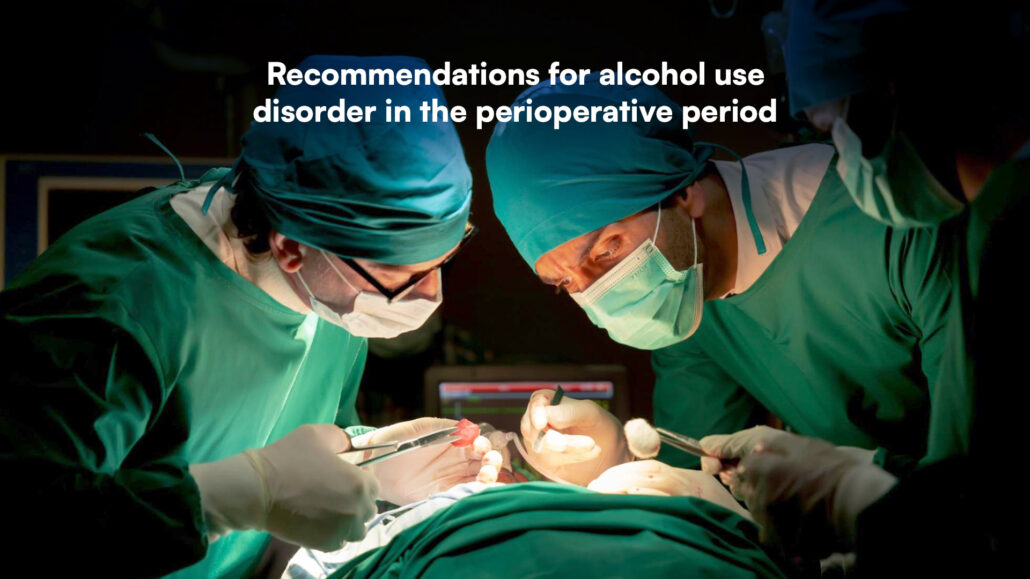
Recommendations for alcohol use disorder in the perioperative period
Alcohol use disorder (AUD) presents a significant challenge in the perioperative period, affecting morbidity, mortality, and clinical outcomes. This comprehensive overview focuses on critical considerations for anesthesiologists and pain physicians managing patients with AUD, emphasizing the role of screening, multimodal pain management, and the careful handling of pharmacological treatments like naltrexone and low-dose naltrexone (LDN).
understanding alcohol use disorder (AUD)
Alcohol use disorder is the most prevalent form of substance use disorder (SUD) worldwide, significantly increasing the risk of perioperative complications. It’s characterized by harmful patterns of alcohol consumption, often leading to negative physiological, psychological, and social consequences. According to the DSM-V, a diagnosis of AUD requires at least two of several criteria within 12 months, including increased tolerance, cravings, and failure to meet obligations due to drinking.
Prevalence
Globally, AUD is a contributing factor to 5.9% of all deaths, with higher rates among men (7.6%) than women (4.0%). In the U.S., nearly one-third of Americans will meet the criteria for AUD at some point, with a current prevalence of 14% among adults. Young adults aged 18–25 have the highest rates of AUD, further exacerbated by the rise in alcohol consumption during the COVID-19 pandemic.
Clinical concerns and complications of AUD
Patients with AUD present several challenges in the perioperative setting due to the broad range of effects alcohol has on the body:
- Aspiration risk: Acute alcohol intoxication raises the risk of aspiration during surgery, potentially leading to aspiration pneumonia.
- Malnutrition and coagulopathies: AUD is often associated with poor nutritional status and coagulation disorders, which increase surgical risks such as poor wound healing and excessive bleeding.
- Cardiovascular effects: Chronic alcohol use can lead to conditions such as cardiomyopathy and hypertension, complicating anesthesia and pain management.
- Neurological issues: Patients with AUD may suffer from alcoholic neuropathy, affecting pain perception and complicating the administration of regional anesthesia.
- Infection risk: AUD weakens the immune system, increasing susceptibility to postoperative infections.
Impact of AUD on pain management
Both acute and chronic alcohol use can alter a patient’s pain perception and threshold, influencing the efficacy of analgesics. Patients with chronic alcohol exposure, including those in recovery, may experience hyperalgesia, meaning they are more sensitive to pain, while acute alcohol intake can temporarily raise pain thresholds.
Postoperative pain control
For patients with AUD, it is critical to balance the need for adequate pain control with the risk of opioid misuse or relapse. Pain management strategies should include:
- Multimodal analgesia: This approach combines different types of pain relief methods to reduce reliance on opioids, including:
- Non-opioid analgesics (e.g., acetaminophen, NSAIDs)
- Neuropathic pain medications (e.g., gabapentin, pregabalin)
- Regional anesthesia techniques when appropriate.
- Local wound infiltration: Administering local anesthetics at the surgical site can reduce postoperative pain and the need for systemic opioids.
- Perioperative infusions: Intraoperative use of medications like ketamine, lidocaine, or magnesium can help manage pain and reduce opioid requirements.
- Regional anesthesia: Peripheral nerve blocks and neuraxial anesthesia can be safely used in AUD patients, though careful preoperative assessment is necessary to document any existing neurological deficits.
Managing naltrexone in the perioperative period
Naltrexone, a non-selective opioid receptor antagonist, is commonly used in the treatment of AUD. It works by blocking the rewarding effects of alcohol, helping to reduce cravings and prevent relapse. However, naltrexone’s role in perioperative care poses unique challenges due to its interaction with opioids.
- Preoperative management: Naltrexone should generally be discontinued at least 72 hours before surgery if opioid use is anticipated. For patients on intramuscular naltrexone (Vivitrol), the last dose should be administered no less than 25 days before surgery to allow time for receptor clearance.
- Postoperative considerations: After surgery, naltrexone should not be reinitiated until 7–10 days after the last opioid dose to avoid precipitating withdrawal.
Low-dose naltrexone (LDN)
Low-dose naltrexone (LDN), typically administered at 1.5–4.5 mg, has gained attention for its potential analgesic and anti-inflammatory properties. Unlike standard naltrexone doses used in AUD treatment, LDN can be continued perioperatively if opioid-free anesthesia is planned. If opioids are necessary, LDN should be discontinued 48 hours before surgery to ensure adequate opioid receptor availability.
Perioperative evaluation and screening
Proper preoperative evaluation of patients with AUD is essential. An accurate history of alcohol consumption, including any AUD treatments, should be obtained. In cases where history is unclear, toxicology screening (urine or blood alcohol levels) may be beneficial. Studies indicate that reducing alcohol consumption at least four weeks before surgery can dramatically lower the risk of postoperative complications.
Multidisciplinary care approach
For optimal outcomes, perioperative care for patients with AUD should involve a multidisciplinary team, including anesthesiologists, surgeons, pain physicians, addiction specialists, and social workers. A non-judgmental approach, avoiding stigmatizing language, can encourage patients to disclose their alcohol use and engage in appropriate treatment.
Postoperative discharge planning
Patients with AUD are particularly vulnerable to relapse after surgery. Postoperative pain control is critical to reducing relapse risk, and opioid prescriptions should be carefully managed. Where possible, non-opioid pain management strategies should be prioritized. Continuation of AUD medications like acamprosate or disulfiram postoperatively is recommended, while naltrexone reinitiation should be coordinated with the patient’s AUD treatment provider.
Conclusion
Managing patients with AUD in the perioperative period requires a nuanced understanding of the physiological, psychological, and pharmacological challenges these patients face. Through careful screening, tailored pain management strategies, and collaboration with addiction specialists, anesthesiologists, and pain physicians, we can improve surgical outcomes and reduce the risk of relapse in this vulnerable population.
For more detailed information, refer to the full article in Regional Anesthesia and Pain Medicine.
Lane O, Ambai V, Bakshi A, et al. Alcohol use disorder in the perioperative period: a summary and recommendations for anesthesiologists and pain physicians. Regional Anesthesia & Pain Medicine 2024;49:621-627.
Explore this topic in our newest Anesthesiology Manual: Best Practices & Case Management for more information on liver transplantation. Don’t miss out—get your copy on Amazon or Google Books.




